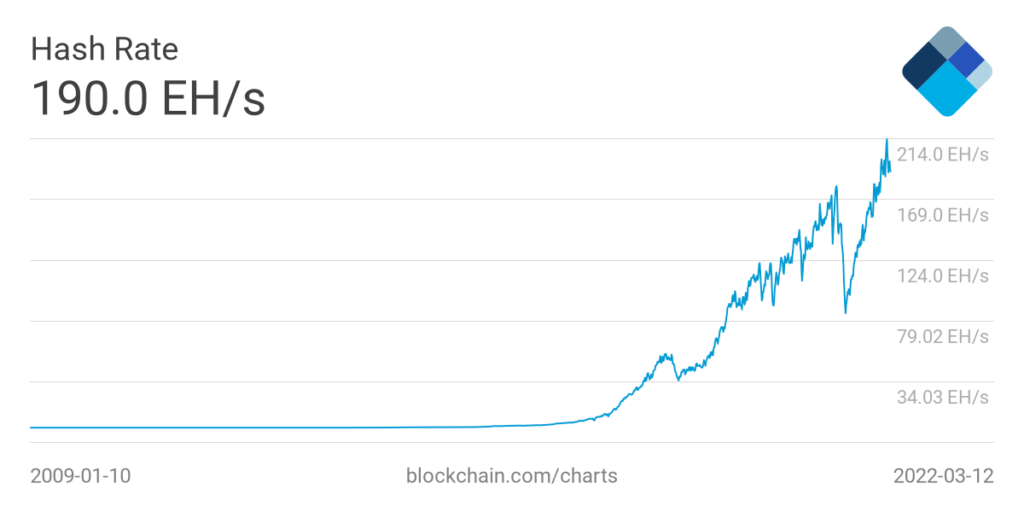And how does it work?
Miners (computers) compete to find the next block by making billions of guesses. These guesses (hashes) are to find the link to the previous (imagine one padlock on the floor with a billion keys) these miners are competing to find that specific key that opens the padlock.
Once the key is found, that will confirm the block and add it to the blockchain forever. The successful miner(s) receive new bitcoins as a reward for their work. And the whole process starts again.
On average every 10 minutes a new block is found and this is broadcast to all nodes to update the distributed ledger.
What I do know is that Bitcoin mining is Proof of Work. It rewards productivity and efficiency. Pure capitalism. Oh, bugger just watch this video below.
Clear as mud? Yep. No one said understanding this stuff is easy. And most of us don’t need to know about this stuff.
I’ll try Bitcoin mining again.
Bitcoin miners convert energy into security for the bitcoin network. The monetary incentive to secure the network is larger than the monetary incentive to attack the network. Welcome to the blockchain.
Maintained by the miners and adjudicated by the nodes. The mining process is fundamental to the decentralisation of bitcoin. It allows a set of rules to be followed and set into stone every 10 minutes without any need for a human being or third party to be involved in the process.
Nearly
If the bitcoin protocol (as set by the node) is followed then a transaction is valid. If not, it does not. Mining is the process of putting a collection of valid transactions into a block. and then a node will broadcast the block to the blockchain. So the nodes can update their ledgers.
Difficulty Adjustment
Every two weeks the bitcoin mining difficulty will adjust automatically due to the protocol needing to keep 10 minutes between each block.
Satoshi said
“To compensate for increasing hardware speed and varying interest in running nodes over time, the proof-of-work difficulty is determined by a moving average targeting an average number of blocks per hour. If they’re generated too fast, the difficulty increases.”
Satoshi Nakomoto https://nakamotoinstitute.org/bitcoin/

Explanation
Mining hashrate is a key security metric. The more hashing (computing) power in the network, the greater its security and its overall resistance to attack. Although Bitcoin’s exact hashing power is unknown, it is possible to estimate it from the number of blocks being mined and the current block difficulty.
Notes
Daily numbers (raw values) may periodically rise or drop as a result of the randomness of block discovery : even with a hashing power constant, the number of blocks mined can vary in day. Our analysts have found that looking at a 7 day average is a better representation of the underlying power.
Methodology
The hashing power is estimated from the number of blocks being mined in the last 24h and the current block difficulty. More specifically, given the average time T between mined blocks and a difficulty D, the estimated hash rate per second H is given by the formula H = 2 32 D / T
For the latest mining stats check out Clark Moody Dashboard
The individual transactions go to the mempool find out about that here
- Bitcoin City Arnhem, Netherlands
- Getting Longy off ZERO
- Earn bitcoin for music
- 7 reasons why Bitcoin Wins
- Bitcoin Lightning Addresses – Get Alby


Recent Comments